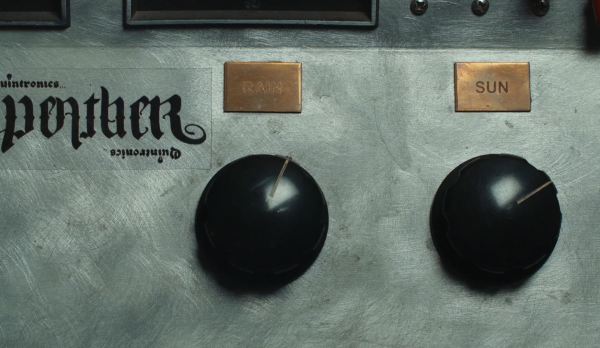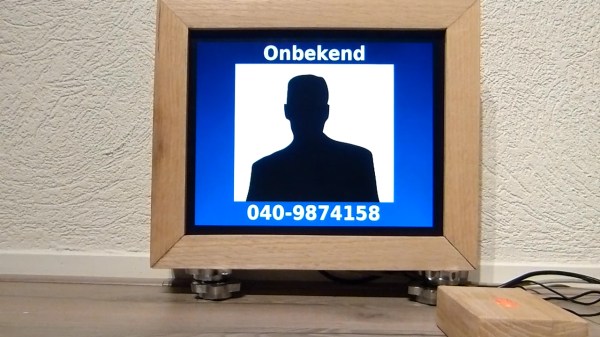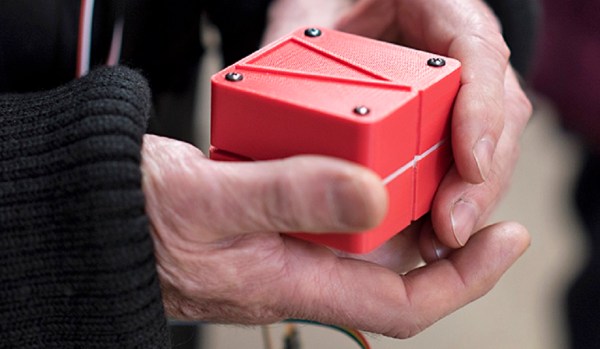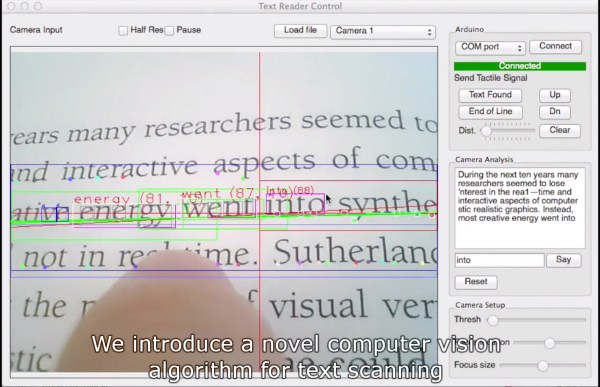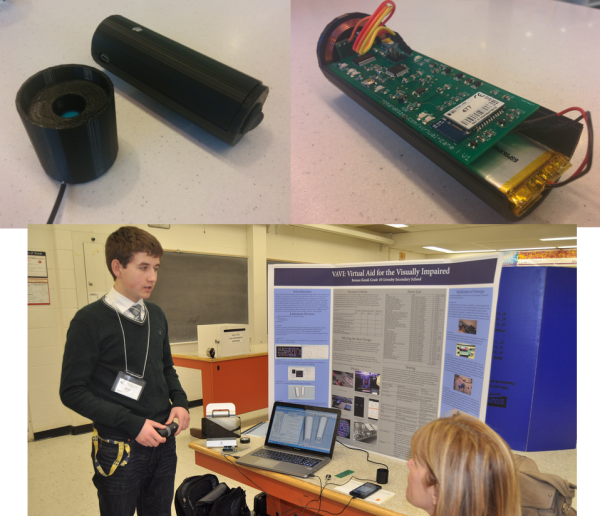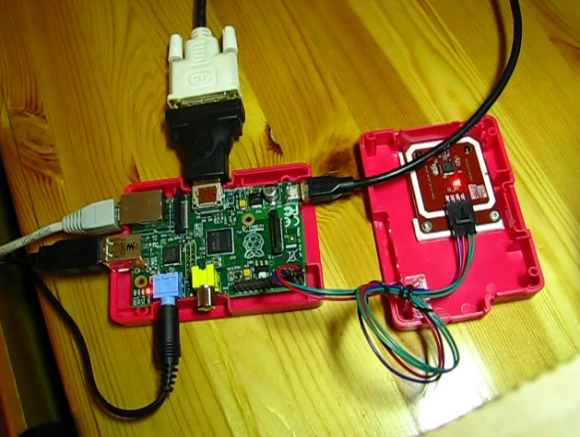[Roy Shilkrot] and his fellow researchers at the MIT Media Lab have developed the FingerReader, a wearable device that aids in reading text. Worn on the index finger, it receives input from print or digital text and outputs spoken words – and it does this on-the-go. The FingerReader consists of a camera and sensors that detect the text. A series of algorithms the researchers created are used along with character recognition software to create the resulting audio feedback.
There is a lot of haptic feedback built into the FingerReader. It was designed with the visually impaired as the primary user for times when Braille is not practical or simply unavailable. The FingerReader requires the wearer to make physical contact with the tip of their index finger on the print or digital screen, tracing the line. As the user does so, the FingerReader is busy calculating where lines of text begin and end, taking pictures of the words being traced, and converting it to text and then to spoken word. As the user reaches the end of a line of text or begins a new line, it vibrates to let them know. If a user’s finger begins to stray, the FingerReader can vibrate from different areas using two motors along with an audible tone to alert them and help them find their place.
The current prototype needs to be connected to a laptop, but the researchers are hoping to create a version that only needs a smartphone or tablet. The videos below show a demo of the FingerReader. For a proof-of-concept, we are very impressed. The FingerReader reads text of various fonts and sizes without a problem. While the project was designed primarily for the blind or visually impaired, the researchers acknowledge that it could be a great help to people with reading disabilities or as a learning aid for English. It could make a great on-the-go translator, too. We hope that [Roy] and his team continue working on the FingerReader. Along with the Lorm Glove, it has the potential to make a difference in many people’s lives. Considering our own lousy eyesight and family’s medical history, we’ll probably need wearable tech like this in thirty years!
Continue reading “Trace Your Book Or Kindle With The FingerReader” →

